Sabrent dual NVMe SSD docking station review: Lots of storage, sufficient speed
The Sabrent Thunderbolt 3 NVMe SSD Docking Station provides not only a handy expansion of ports for your Mac, but also offers decently fast external storage at the same time.
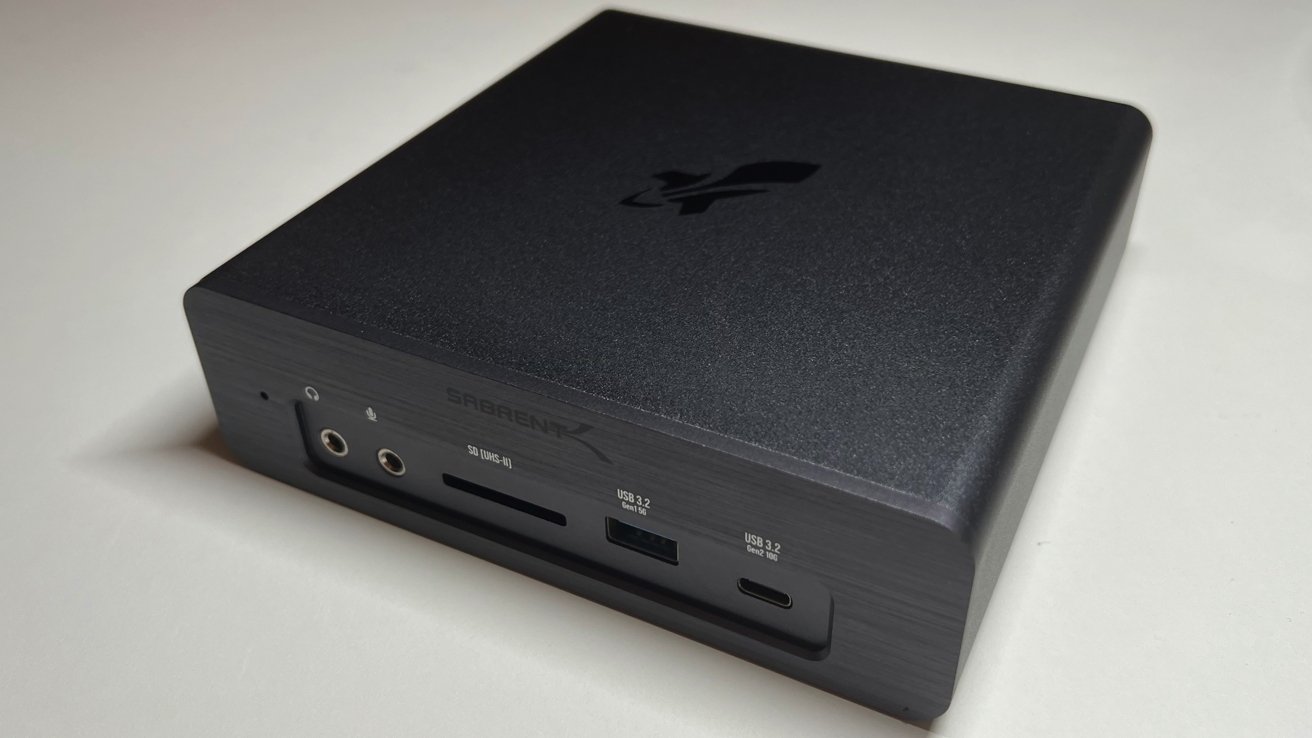
Sabrent Thunderbolt 3 NVMe SSD Docking Station
When you buy a MacBook Pro, you're stuck with what you buy for storage and ports. In 2022, seven years after the USB-C connector was introduced on the MacBook, ports are easy to add with a huge array of USB-C and Thunderbolt hubs and docks.
Storage is easy and relatively inexpensive too, as long as you go external. But while you could plug the drive and a dock into a MacBook Pro's ports, it still means you've got two boxy devices on your desk, and probably extra power cords too.
The Sabrent Thunderbolt 3 NVMe 8TB SSD Docking Station aims to solve that problem by combining a dock with high-speed storage into one single device. It connects to just one port on your Mac, giving you the best of both worlds.
It's a fairly compact dock as well, measuring 5.55 inches long and 5.57 inches wide, and 1.7 inches in height. This gives it a smaller footprint than a Mac mini, but it's still slightly taller.
At 2 pounds and 2 ounces, it's pretty dense as far as docks go. But more on this in a little bit.
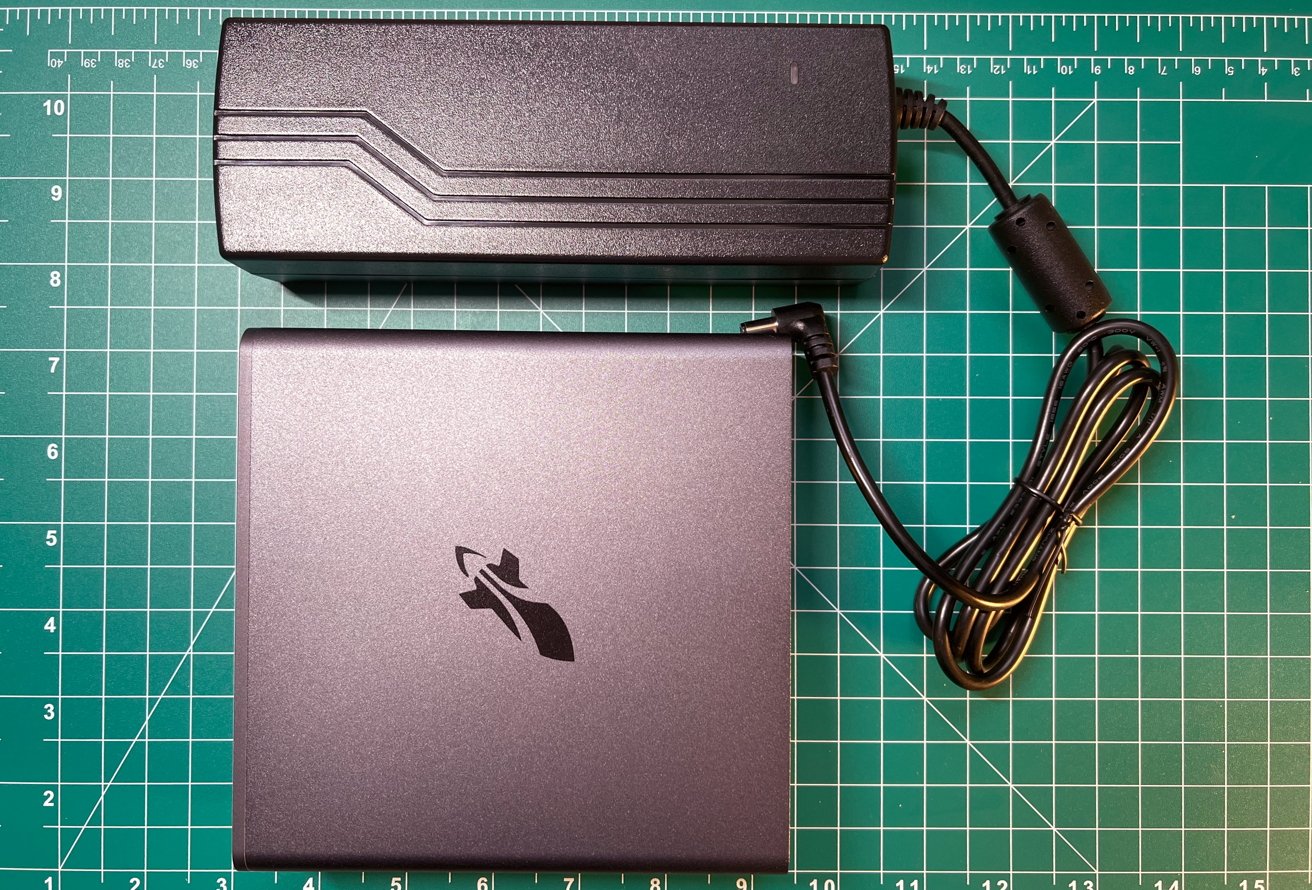
The dock is fairly compact. The power brick isn't.
Along with the enclosure, you get a fairly large 150W power brick, which is longer and taller than the dock, but still small enough to be hidden behind a desk. We wouldn't call it light, but if you're already lugging around a 16-inch MacBook Pro, what's another two pounds.
Also inside the box, you get a two-foot long Thunderbolt 3 cable for connecting it to your hardware. As always, enough to get started, but not enough for most uses.
Around the back, Sabrent has a pair of Thunderbolt 3 ports, DisplayPort 1.4, Gigabit Ethernet, and two USB 3.2 Type-A connections, one each of Gen 2 and Gen 1.
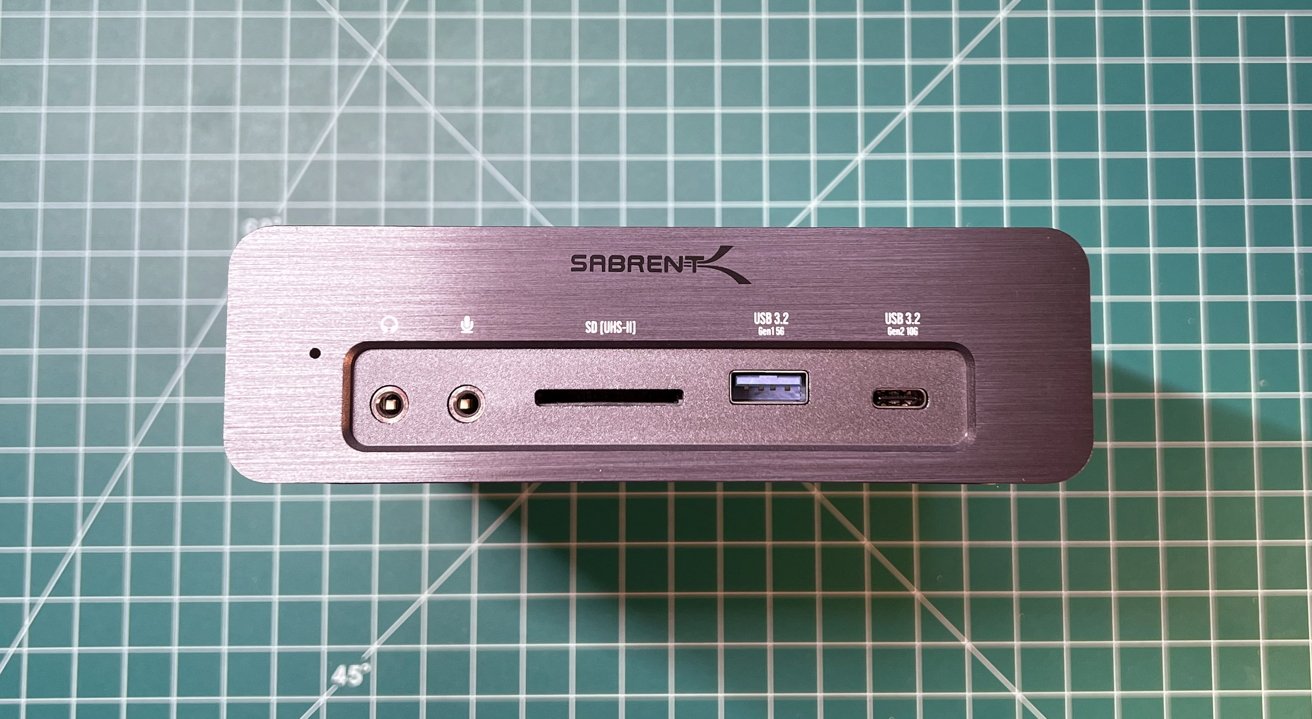
The front of the Sabrent Thunderbolt 3 NVMe SSD Docking Station
One of those Thunderbolt 3 ports is intended to be connected to the host Mac, and provide up to 96W of power. This is enough to recharge a connected MacBook Pro, making it suitable for those wanting to have a single-cable docking system.
It kept our 16-inch MacBook Pro fully charged with no battery drain. What it is not, is MagSafe, and does not provide power for fast charging.
We like this arrangement of ports. The ones to the back aren't typically plugged and unplugged that often, and most of the time you're probably going to leave this dock set up somewhere.
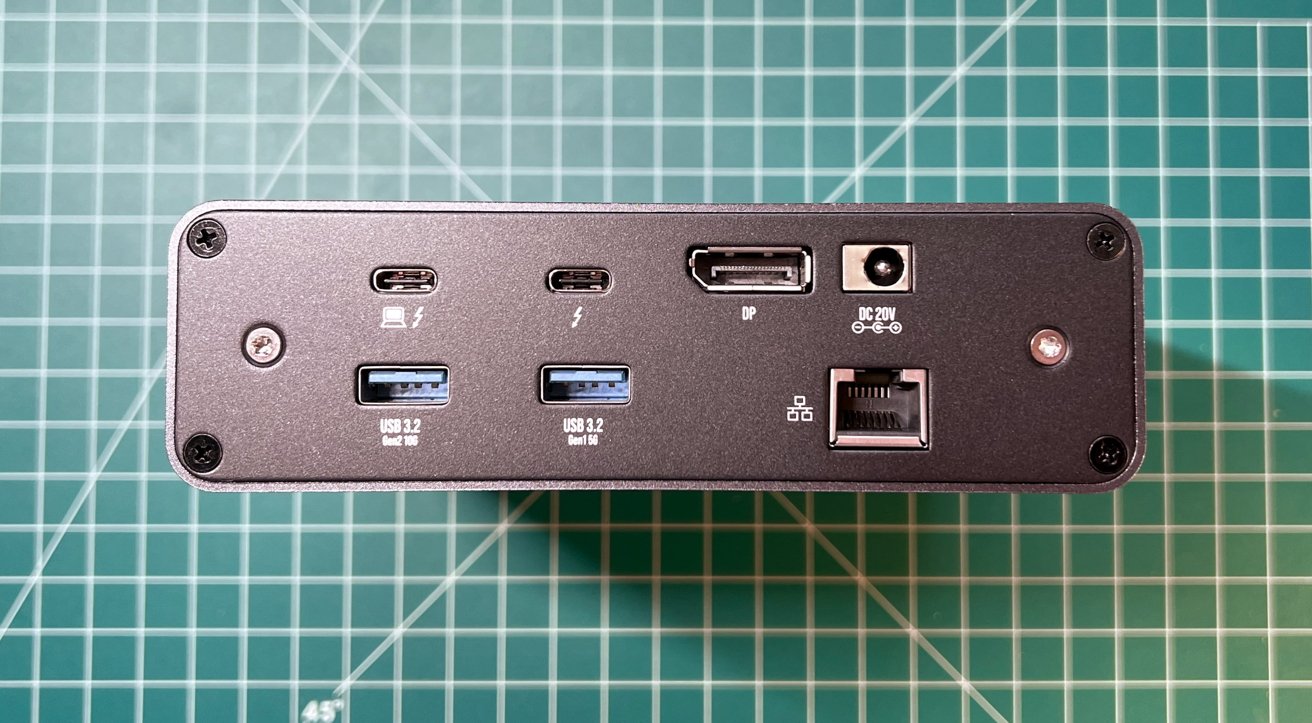
The dock's rear port selection.
The DisplayPort is able to power an 8K display at up to 30Hz, a 5K screen at 60Hz, or a 4K screen at a maximum of 120Hz, as well as lower resolutions. Depending on the video support of your Mac, this is a decent selection of resolutions.
What it will not do, is give multiple monitor support to computers that can only support one monitor on USB-C connections. That's left to docks with DisplayMate compatibility -- and that's fine.
Rather than using a normal SSD, Sabrent includes an NVMe version, which usually provides sky-high transfer speeds. According to the company, the included drive can handle read and write speeds of up to 1,500MB/s.
This speed is basically what we got in testing. In bursts, it can go up to about 1.6 gigabytes per second, but that may be an artifact of the caching of the drive. When the cache is full, speeds drop to about 500 megabytes per second, but given that the drives aren't operating at maximum speed, this takes a while to reach.
We took apart the unit, as it is designed to be upgradeable later, and the drives inside are Sabrent 4TB Rocket Q NVMe capable of about 3 gigabytes per second, each. We swapped them out with a another matched pair of PCI-E drives from a different manufacturer capable of more than 3 gigabytes per second each, and were unsurprisingly still seeing the same speeds.
This is likely intentional. This allows for good-enough speed for nearly any task, while not hampering the speed of the other ports at the same time.
The power delivery is more than suitable for MacBook users, even those with the 16-inch MacBook Pro. That one-cable life is possible here -- and we've been using it daily, replacing our regular dock for the purposes of review.
It's more than fast enough to satisfy power users, such as video editors. The 8TB capacity will provide more storage overflow for more typical users.
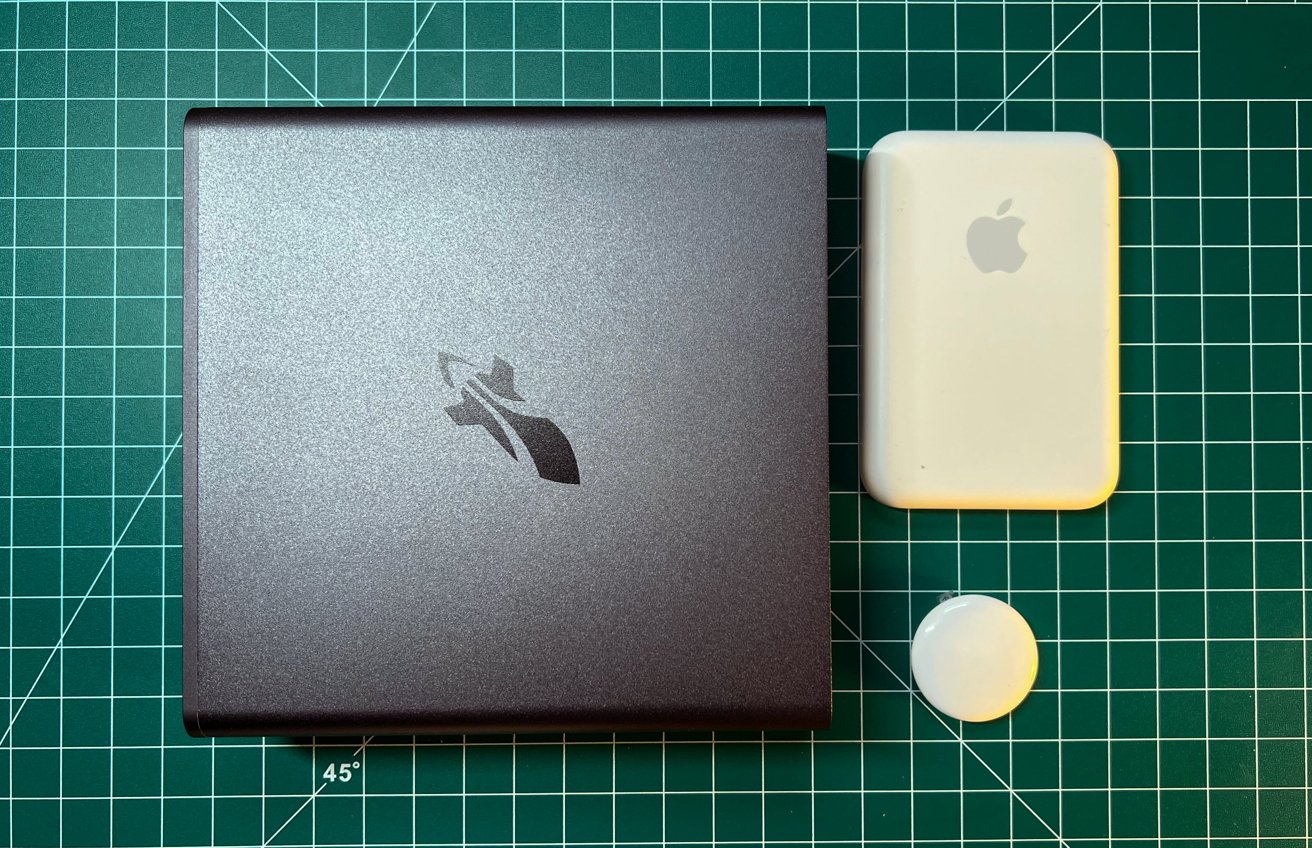
Comparing the size of the Sabrent Thunderbolt 3 NVMe SSD Docking Station
Let's be frank -- the 8TB model costs $1,299.99, the 2TB version retails for $499.99, and the 4TB is $649.99. If all you need is the storage, that is a decent price for a dock plus 8TB of Flash storage, but terrible for 8TB of storage on a hard drive.
This is a key example of considering what you need, down to the absolute last detail before you buy. A 8TB external hard drive at 1/10 the speed, retails for about $145. A good Thunderbolt dock without storage is in the vicinity of $300.
So, if you just need mass storage and legacy ports, without speed being a requirement, this is not the product for you.
If you need semi-portable fast storage, it might be, though. Going up to 8TB of storage on the 16-inch MacBook Pro adds $2200 to the price. The Sabrent Thunderbolt 3 NVMe SSD Docking Station is half that price with about a third of the delivered speed as a MacBook Pro SSD, in a complete package that's about the same volume as two MacBook Pro power bricks.
We don't think we'd haul it to Starbucks and work from it there. But, we have used it in off-site locations, when we've set up for days at a time, and it's been pretty good for that.
And, you get a lot of so-called legacy ports to boot.
Sabrent products are also available on Amazon, with the 2TB option starting at $501.
Read on AppleInsider

Sabrent Thunderbolt 3 NVMe SSD Docking Station
When you buy a MacBook Pro, you're stuck with what you buy for storage and ports. In 2022, seven years after the USB-C connector was introduced on the MacBook, ports are easy to add with a huge array of USB-C and Thunderbolt hubs and docks.
Storage is easy and relatively inexpensive too, as long as you go external. But while you could plug the drive and a dock into a MacBook Pro's ports, it still means you've got two boxy devices on your desk, and probably extra power cords too.
The Sabrent Thunderbolt 3 NVMe 8TB SSD Docking Station aims to solve that problem by combining a dock with high-speed storage into one single device. It connects to just one port on your Mac, giving you the best of both worlds.
Sabrent Thunderbolt 3 NVMe SSD Docking Station - Compact and tough
Sabrent's design consists of a durable aluminum enclosure, with a lightly textured top and sides, and Sabrent's branding on the top and front. All of the ports for the dock are located at the front and back, leaving the sides clean.It's a fairly compact dock as well, measuring 5.55 inches long and 5.57 inches wide, and 1.7 inches in height. This gives it a smaller footprint than a Mac mini, but it's still slightly taller.
At 2 pounds and 2 ounces, it's pretty dense as far as docks go. But more on this in a little bit.

The dock is fairly compact. The power brick isn't.
Along with the enclosure, you get a fairly large 150W power brick, which is longer and taller than the dock, but still small enough to be hidden behind a desk. We wouldn't call it light, but if you're already lugging around a 16-inch MacBook Pro, what's another two pounds.
Also inside the box, you get a two-foot long Thunderbolt 3 cable for connecting it to your hardware. As always, enough to get started, but not enough for most uses.
Sensible port division
Sabrent includes quite a few ports with the dock, split to the front and back. At the front, the dock has a USB 3.2 Gen 2 Type-C port that works at 10Gbps, a USB 3.2 Gen 1 Type-A that runs at 5Gbps, separate headphone and mic jacks, and an SD UHS-II memory card slot.Around the back, Sabrent has a pair of Thunderbolt 3 ports, DisplayPort 1.4, Gigabit Ethernet, and two USB 3.2 Type-A connections, one each of Gen 2 and Gen 1.

The front of the Sabrent Thunderbolt 3 NVMe SSD Docking Station
One of those Thunderbolt 3 ports is intended to be connected to the host Mac, and provide up to 96W of power. This is enough to recharge a connected MacBook Pro, making it suitable for those wanting to have a single-cable docking system.
It kept our 16-inch MacBook Pro fully charged with no battery drain. What it is not, is MagSafe, and does not provide power for fast charging.
We like this arrangement of ports. The ones to the back aren't typically plugged and unplugged that often, and most of the time you're probably going to leave this dock set up somewhere.

The dock's rear port selection.
The DisplayPort is able to power an 8K display at up to 30Hz, a 5K screen at 60Hz, or a 4K screen at a maximum of 120Hz, as well as lower resolutions. Depending on the video support of your Mac, this is a decent selection of resolutions.
What it will not do, is give multiple monitor support to computers that can only support one monitor on USB-C connections. That's left to docks with DisplayMate compatibility -- and that's fine.
Built-in storage
Sabrent offers the dock in 2TB, 4TB, and 16TB capacities as well as the 8TB version supplied for review.Rather than using a normal SSD, Sabrent includes an NVMe version, which usually provides sky-high transfer speeds. According to the company, the included drive can handle read and write speeds of up to 1,500MB/s.
This speed is basically what we got in testing. In bursts, it can go up to about 1.6 gigabytes per second, but that may be an artifact of the caching of the drive. When the cache is full, speeds drop to about 500 megabytes per second, but given that the drives aren't operating at maximum speed, this takes a while to reach.
We took apart the unit, as it is designed to be upgradeable later, and the drives inside are Sabrent 4TB Rocket Q NVMe capable of about 3 gigabytes per second, each. We swapped them out with a another matched pair of PCI-E drives from a different manufacturer capable of more than 3 gigabytes per second each, and were unsurprisingly still seeing the same speeds.
This is likely intentional. This allows for good-enough speed for nearly any task, while not hampering the speed of the other ports at the same time.
Small and useful but expensive
As a package in its own right, the Sabrent Thunderbolt 3 NVMe SSD Docking Station is pretty good. It has a relatively small volume, plus an ample selection of key ports available to use.The power delivery is more than suitable for MacBook users, even those with the 16-inch MacBook Pro. That one-cable life is possible here -- and we've been using it daily, replacing our regular dock for the purposes of review.
It's more than fast enough to satisfy power users, such as video editors. The 8TB capacity will provide more storage overflow for more typical users.

Comparing the size of the Sabrent Thunderbolt 3 NVMe SSD Docking Station
Let's be frank -- the 8TB model costs $1,299.99, the 2TB version retails for $499.99, and the 4TB is $649.99. If all you need is the storage, that is a decent price for a dock plus 8TB of Flash storage, but terrible for 8TB of storage on a hard drive.
This is a key example of considering what you need, down to the absolute last detail before you buy. A 8TB external hard drive at 1/10 the speed, retails for about $145. A good Thunderbolt dock without storage is in the vicinity of $300.
So, if you just need mass storage and legacy ports, without speed being a requirement, this is not the product for you.
If you need semi-portable fast storage, it might be, though. Going up to 8TB of storage on the 16-inch MacBook Pro adds $2200 to the price. The Sabrent Thunderbolt 3 NVMe SSD Docking Station is half that price with about a third of the delivered speed as a MacBook Pro SSD, in a complete package that's about the same volume as two MacBook Pro power bricks.
We don't think we'd haul it to Starbucks and work from it there. But, we have used it in off-site locations, when we've set up for days at a time, and it's been pretty good for that.
And, you get a lot of so-called legacy ports to boot.
Sabrent Thunderbolt 3 NVMe SSD Docking Station Pros
- Compact dock size
- Good port selection
- Built-in fast storage reduces need for a separate drive
- User-upgradable storage
Sabrent Thunderbolt 3 NVMe SSD Docking Station Cons
- Cost can be a factor at higher capacities
- Two SSDs could theoretically deliver faster speeds, but might hamper the other ports at the same time
- Large -- but not enormous -- power brick
Rating: 4 out of 5
Where to buy
The Sabrent dual NVME SSD docking station is available with up to 16TB of storage from Sabrent's website, starting at $499 for 2TB. As reviewed, the 8TB version sells for $1299.Sabrent products are also available on Amazon, with the 2TB option starting at $501.
Read on AppleInsider

Comments
The Hiearcool docking station here is pretty nice for what it is, but is a little bandwidth-starved at 10gbit. The one we bought for testing may be defective, and we're not sure if it's part of a larger problem. Caveat emptor. There are other options, obviously.
This is likely intentional. This allows for good-enough speed for nearly any task, while not hampering the speed of the other ports at the same time.”
We did the swap more to test the drives than anything else. We knew we weren't going to get more than 2.8 gigabytes per second or so, because of the limits of Thunderbolt. Since the speed was unchanged with the new drives that we know can deliver more than 1.6 gigabytes per second, the limiting factor is the enclosure, and probably PCI-E channel allocation to them in the dock itself.
What do you have, do you have a Thunderbolt enclosure with a PCI-E card and the drives mounted on that, or just an enclosure?
Also, I'm confused -- bought the M2 what? The Mac Studio is M1 Pro or M1 Ultra.
I was planning to buy a Mac Pro JUST for this kind of analysis (NeoFinder uses Apple’s image analysis algorithm allowing me to search for “car” or “dress”… in video as well as images which is amazing but boy does it take some time!)
I must add - excellent work you guys do at AI - I have followed you since your inception and really enjoy the podcast now. And the fact that your website does not autoplay video ads - I stopped going to Ars because I can’t listen to music at the same time. Keep it up!